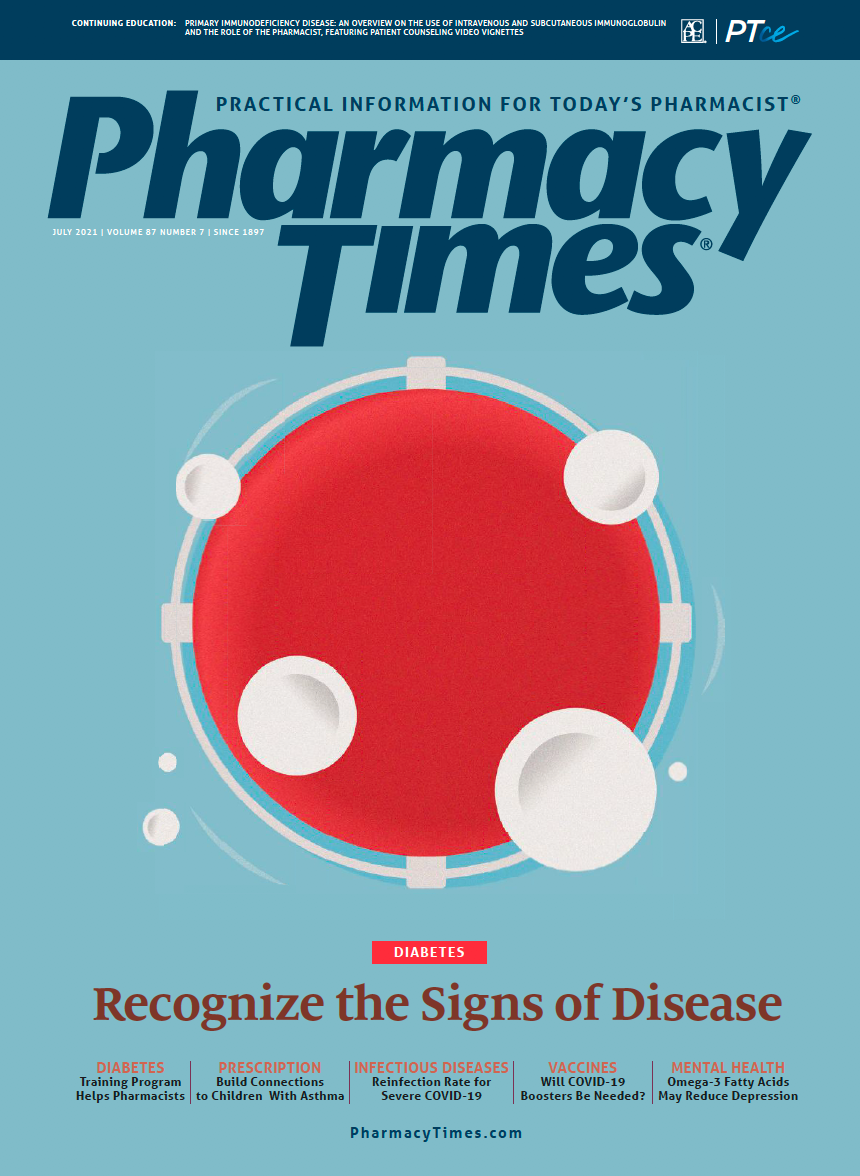Publication
Article
Pharmacy Times
Pharmacists Can Help Patients Manage, Prevent Migraines
Author(s):
This recurring condition can require more firepower than OTC pain medications offer.
Community pharmacists can play an important role in the prevention and management of migraines, whether by helping them identify differences between a migraine and a severe headache or by providing medication management, according to a panel of experts in a recent Pharmacy Times Peer Exchange.
Identifying whether patients are experiencing a migraine or a severe headache is often the first step when patients come to a community pharmacist with questions, according to panelist Jennifer L. Mazan, PharmD, an associate professor at the Midwestern University College of Pharmacy in Downers Grove, Illinois.
Unlike other headaches, migraines are complex and can present differently at different times, she said.
"Patients who [experience] migraines may experience nausea, vomiting, difficulty concentrating, sensitivity to light or sound, [and] some may even experience an aura that proceeds the headache," Mazan said. "And once they're pain-free, the patient may find that they're tired, exhausted, or even irritable."
Whereas headaches can typically be treated with an OTC pain reliever, panelist Timothy R. Smith, MD, RPh, PharmD, CEO of StudyMetrix Research in St. Peters, Missouri, said that treating migraines can take several steps.
Patients first need to have a consultation to identify their symptoms and receive an accurate diagnosis, followed by a prescription for effective treatment.
Research results suggest health systems struggle with these steps, Smith said.
For example, the American Migraine Prevalence and Prevention Study analyzed patients with episodic migraines and found that just 26% of those who experience these migraines have actually had a consultation, received an accurate diagnosis, and been given an evidence-based treatment, he said.
Among patients with more severe, chronic migraines, study results have shown that just 4.5% successfully completed these steps.
When considering appropriate treatments, the panelists said prescribers must consider both acute and preventive medications, which have different goals.
Smith said that according to the American Headache Society and the FDA, the goal of therapy should be complete freedom from pain within 2 hours of dosing.
"That's sort of intuitive; we know that patients want to be pain-free," he said. "That's the greatest predictor of improvement and functionality....[Patients also want] freedom from those associated symptoms of light [and] noise sensitivity and nausea with or without vomiting."
Despite the availability of traditional treatments, however, many patients who receive these prescriptions do not experience adequate pain and symptom relief, Smith said.
For example, study results show that more than 50% of patients who receive a prescription for triptans do not refill them within 1 year, although the reasons for this remain unclear, he said.
To address these unmet needs, moderator Mark Percifield, PharmD, a registered on-site manager at Walgreens in Largo, Florida, said the FDA has approved several new drugs, including the 5-HT1F receptor agonist lasmiditan (Reyvow).
The drug has been on the market for approximately 18 months, and Percifield noted that it is a serotonin agonist but not a triptan.
Notably, lasmiditan does not cause vasoconstriction, which is a significant difference from the triptan class of medications. However, because it has central penetrants and affects the central nervous system, lasmiditan can have adverse effects such as dizziness, fatigue, paresthesia, and sedation.
Mazan also discussed the gepant class of medications for the treatment of acute migraines, including ubrogepant (Ubrelvy). The calcitonin gene-related peptide (CGRP) protein is thought to be released during a migraine, so the CGRP antagonists work by blocking the receptor. Some CGRP antagonists were already approved for chronic or preventive treatments, but ubrogepant has received the first approval for acute migraine treatment.
The NCT00135304 and NCT02867709 and ACHIEVE-2 trials evaluated the efficacy of ubrogepant, finding that approximately 60% of patients experienced migraine relief after the 2-hour mark. Specifically, approximately 20% of patients were pain-free and approximately 40% were free of their most bothersome symptoms after 2 hours.
Adequately identifying and treating migraines are essential for patients' health and well-being, the panelists concluded.
Migraines have a huge impact on patients' quality of life, often resulting in a lack of ability to carry out normal activities, according to Amy R. Dunleavy, PharmD, a community pharmacist at Osterhaus Pharmacy in Maquoketa, Iowa.
"That throbbing pain, the nausea and vomiting, [and] that photo, and sound sensitivity really can affect the individual from being able to carry out their normal activities of daily life, [thus] keeping them [from] being able to be active with their loved ones, keeping them from work," she said. "And for individuals [experiencing] migraines, this can last for hours or even days."
REFERENCE
Percifield M, Dunleavy A, Mazan J, Smith T. Pharmacy Times Peer Exchange. June 2, 2021.






